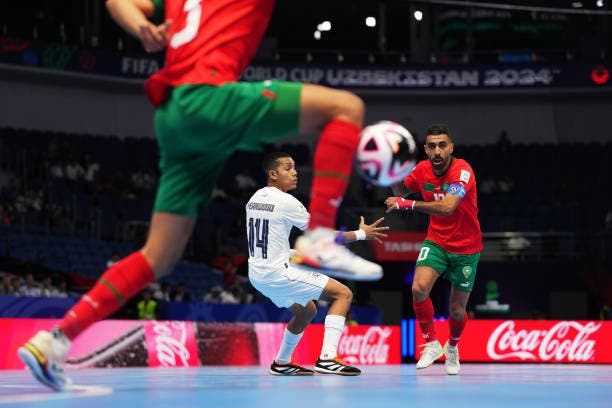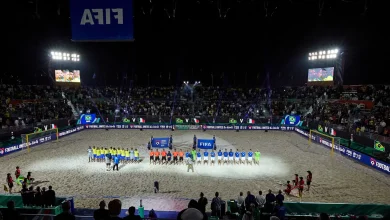Discover the most important rules of indoor football

Futsal is one of the most popular team sports in the world and is characterized by being a miniaturized and condensed version of traditional football.
Although it shares many basic rules with football, it has its own characteristics that make it a unique game.
Futsal is played at high speed and pace, and its style is characterized by quick movements and constant substitutions. Although it shares its main objectives with traditional football, the nuances of the rules make it more difficult in terms of adaptation and strategic planning.
The Fédération Internationale de Football Association (FIFA) has summarized the most important rules of futsal to help players, coaches and fans understand the game and get used to it easily.
Duration of the match: 40 minutes of emotion
Indoor football is played in two halves of 20 minutes each, calculated according to the actual playing time. This means that the clock stops when play stops, adding an element of precision and excitement as it ensures that every minute is fully utilised.
The break between halves is 15 minutes, which gives teams enough time to reorganize their cards.
Hexagon for the Lions 🇲🇦#FutsalWC | @EnMaroc
– FIFA World Cup 🏆 (@fifaworldcup_ar) September 20, 2024
Time out: a moment of reflection
Each team is allowed to request a one-minute timeout per half, provided the team requesting the timeout has possession of the ball.
This time-out is often used to change tactics or calm the game down.
The time limit cannot be carried over from the first half to the second, making its use a prudent strategic decision.
No additional time-outs are granted in the event of overtime.
Unlimited permutations: constant freedom of movement
The match starts with five players on the field, including the goalkeeper, but teams can make unlimited substitutions during the match. This system is characterized by the fact that it allows teams to change players without stopping play, provided that the substitutions take place in the designated substitution area.
This law gives teams greater flexibility in managing their crew throughout the 40 minutes.
🇲🇦🌟@EnMaroc | #FutsalWC
– FIFA World Cup (@FIFAWorldCup) September 19, 2024
Punishments: Maintaining Discipline
If a player commits a foul, the referee may award a free kick or a penalty if the foul occurred inside the penalty area.
Yellow and red cards are also used to maintain order, with teams having the option to replace a sent-off player two minutes after his sending-off or immediately after the team concedes a goal.
Goalkeepers: Leaders of the back line
Futsal goalkeepers have special rules that give them a vital role in the game.
They are allowed to touch the ball with their hands inside the penalty area, but must pass the ball to a teammate within four seconds, ensuring a fast pace of play.
They are also prohibited from participating in the attack, unless they enter the opponent’s half of the field.
Accumulated errors: precise calculations
Fouls that result in free kicks or penalties are counted in a system called “accumulated fouls.”
After the team commits the sixth foul, the opposing team is awarded a free kick without a defensive wall, which increases the chances of scoring goals.
These mistakes continued into overtime, which reinforced caution and discipline among the players.
General information: Different stages and special rules
Futsal is played with a special ball that bounces less than traditional soccer, allowing for better control in tight spaces.
The goal is also smaller and instead of side throws, play is resumed with throw-ins.
Most importantly, there is no offside in futsal, which radically changes the way we attack and defend.







